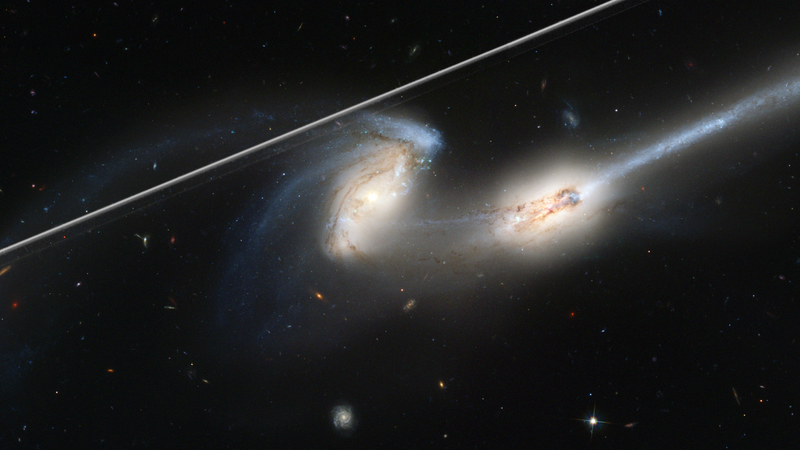Hubble Scientists Develop Software Fix for Satellite Streaks in Images

The Hubble Space Telescope images the cosmos from low Earth orbit, but an abundance of artificial satellites circle the planet at higher altitudes. That’s become an irritation in recent years, as the thousands of devices leave bright streaks in Hubble imagery.
Now, researchers with the Space Telescope Science Institute have developed a tool to identify the telltale trails satellites leave in Hubble images taken by the telescope’s Advanced Camera for Surveys, which has a wider field of view than the telescope’s other imagers.
Read more
In an institute release, the scientists stressed that these satellite marks are more a nuisance than a glaring problem. They appear in about 10% of the space telescope’s exposures of the cosmos—which seems significant until you learn that they affect less than half a percent of the given exposure.
Thankfully, Hubble takes multiple exposures for any given observation, and the tools developed by STScI researchers are being used to identify the streaks and edit them out of Hubble imagery, using other exposures from the same observation to produce composite images with no streaking satellites.
The new research suggests satellite swarms won’t be as detrimental to Hubble as previously thought, due to the emergence of software to mitigate the problem. The team’s report on the new identification approach is being presented at the 242nd American Astronomical Society meeting this week.
“To date, these satellite trails have not had a significant impact on research with Hubble,” said Tom Brown, head of STScI’s Hubble Mission Office, in the release. “The cosmic rays that strike the telescope’s detectors are a bigger nuisance.”
Cosmic rays leave streaks in Hubble imagery similar to that of artificial satellites. (The newer Webb Space Telescope doesn’t have this issue, because it images the cosmos from a point in space about 1 million miles from Earth, way beyond any irritating satellites.)
As the number of artificial satellites increases (it jumped from around 470 orbiting Earth in 1990 to nearly 8,000 today, according to STScI), the tools to remove noise from Hubble imagery will become increasingly important.
The new software built to spot satellite streaks in Hubble imagery is up to ten times more sensitive than the previous trail-spotting tool developed by STScI.
Though Hubble is covered when it comes to editing satellites’—uh, light— out of imagery, astronomers are worried about the noise produced by satellite constellations, like SpaceX’s Starlink. The next generation of Starlink satellites will be brighter than their predecessors, potentially worsening the problem.
Light pollution for Earth-based observatories is also getting worse, due to human-produced light on the ground. So even if Hubble’s team can breathe a sigh of relief, the astronomical world is holding its breath—at least until similar technologies are applied in instruments besides the veteran space telescope.
More: Satellite Swarms Like SpaceX’s Starlink Are Increasingly Spoiling Hubble Telescope Images
More from Gizmodo
Sign up for Gizmodo's Newsletter. For the latest news, Facebook, Twitter and Instagram.

